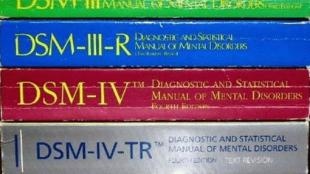Top 10 Research Studies Impacting Gambling Disorders In 2012
In the spirit of end-of-the-year highlights lists, the NCRG staff perused the approximately 500 peer-reviewed publications released in 2012 to determine the most noteworthy studies in the field of gambling disorders and addiction.
Narrowing our list of 10 publications was a challenging task. Therefore, we decided to highlight articles that may predict future trends in research. We salute these authors and all of the investigators who are working to understand gambling disorders.
1.DSM-5 – Changes in Diagnosis for Pathological Gambling

The fifth edition of theDiagnostic and Statistical Manual of Mental Disorders(DSM-5) will delete the current “illegal acts” criterion and reduce the number of criteria required for a diagnosis of pathological gambling from five to four. This study found that DSM-5 criteria performed slightly better than otherDSM-IV-based instruments (Denis, Fatséas, & Auriacombe, 2012).
2.Resistance to Treatment
Nearly 90 percent of people diagnosed with pathological gambling do not seek treatment—and researchers are not sure why that trend occurs. Canadian researchers have taken the lead to figure out what motivates people to seek help (Suurvali, Hodgins, Toneatto, & Cunningham, 2012).
3.Imaging to See What Part of the Brain is Related to Gambling Disorders
The NCRG Center of Excellence in Gambling Research at Yale University conducted a functional magnetic resonance imaging (fMRI) study that found impulsive tendencies may be reflected in diminished activity in part of the brain associated with rewards and may represent a target for the development of treatment for gambling disorders (Balodis et al., 2012).
4.Effectiveness of Therapeutic Interventions for Gambling Disorders
The dearth of randomized control trials (RCT) of treatments for gambling disorders means that RCTs, especially those that test brief interventions, are vital to the field. This study found that two promising approaches led to reduced problems with gambling among the sample of college students (Larimer et al., 2012).
5.Internet Gambling and Corporate Responsibility Interventions
This study examined 10 years of actual Internet gambling behavior of 2,066 gamblers who triggered a responsible gaming alert system at a large international online gaming company (Gray, LaPlante, & Shaffer, 2012). The findings have important implications for designing responsible gaming strategies for the fastest-growing segment of the gaming industry.
6.Toddlers’ Temperament Predicts Later Gambling Problems
Longitudinal studies examining public health issues are important, but these types of studies that follow a group of participants over a period of time are rare in the field of gambling disorders. The 30-year cohort study found that children with “undercontrolled” temperament at three years of age were more than twice as likely to display a gambling disorder at ages 21 and 32 than children who were well-adjusted at age three (Slutske, Moffitt, Poulton, & Caspi, 2012).
7.Predicting Gambling Problems among Minority Youth
Few studies focus on the experience of African-Americans and other minorities with gambling problems. This examination of gambling among urban youth used teacher-provided data to predict the development of gambling problems four to eight years later. The study found that students categorized as highly impulsive by their teachers at ages 11-15 were twice as likely to experience gambling problems by age 19 (Liu et al., 2012).
8.Comparing Pathological Gamblers in Treatment and the Community
This study observed that problem gamblers recruited from treatment centers, versus the larger community for research, are very different. This finding suggests that researchers cannot rely only on disordered gamblers in treatment to understand the disorder (Knezevic & Ledgerwood, 2012).
9.Studying Twin Samples
Using data from a large Australian twin sample, the researchers documented the impact of genetics and the role of personality dimensions in the development of a gambling disorder (Slutske, Cho, Piasecki, & Martin, 2012).
10.Gambling Rats and their Decision-Making Processes
Animal-study researchers have discovered that rats can be used to model human gambling behavior and, therefore, can be used to study decision-making and the effects of various drugs on gambling behaviors. This study used the rodent Iowa Gambling Task to elucidate the effects of drugs on risky choice behavior (Van Enkhuizen, Geyer, & Young, 2012).
REFERENCES
Balodis, I. M., Kober, H., Worhunsky, P. D., Stevens, M. C., Pearlson, G. D., & Potenza, M. N. (2012). Diminished frontostriatal activityduring processing of monetary rewards and losses in pathological gambling.Biological Psychiatry,71(8), 749–757. doi:10.1016/j.biopsych.2012.01.006
Denis, C., Fatséas, M., & Auriacombe, M. (2012). Analyses related to the development of DSM-5 criteria for substance use related disorders: 3. An assessment of Pathological Gambling criteria.Drug and Alcohol Dependence,122(1-2), 22–27. doi:10.1016/j.drugalcdep.2011.09.006
Gray, H. M., LaPlante, D. A., & Shaffer, H. J. (2012). Behavioral characteristics of Internet gamblers who trigger corporate responsible gambling interventions.Psychology of Addictive Behaviors,26(3), 527–535. doi:10.1037/a0028545
Knezevic, B., & Ledgerwood, D. M. (2012). Gambling severity, impulsivity, and psychopathology: comparison of treatment- and community-recruited pathological gamblers.The American Journal on Addictions,21(6), 508–515. doi:10.1111/j.1521-0391.2012.00280.x
Larimer, M. E., Neighbors, C., Lostutter, T. W., Whiteside, U., Cronce, J. M., Kaysen, D., & Walker, D. D. (2012). Brief motivational feedback and cognitive behavioral interventions for prevention of disordered gambling: a randomized clinical trial.Addiction,107(6), 1148–1158. doi:10.1111/j.1360-0443.2011.03776.x
Liu, W., Lee, G. P., Goldweber, A., Petras, H., Storr, C. L., Ialongo, N. S., & Martins, S. S. (2012). Impulsivity trajectories and gambling in adolescence among urban male youth.Addiction. doi:10.1111/add.12049
Slutske, W. S., Cho, S. B., Piasecki, T. M., & Martin, N. G. (2012). Genetic overlap between personality and risk for disordered gambling: Evidence from a national community-based Australian twin study.Journal of Abnormal Psychology. doi:10.1037/a0029999
Slutske, W. S., Moffitt, T. E., Poulton, R., & Caspi, A. (2012). Undercontrolled temperament at age 3 predicts disordered gambling at age 32: a longitudinal study of a complete birth cohort.Psychological Science,23(5), 510–516. doi:10.1177/0956797611429708
Suurvali, H., Hodgins, D. C., Toneatto, T., & Cunningham, J. A. (2012). Motivators for seeking gambling-related treatment among Ontario problem gamblers.Journal of Gambling Studies,28(2), 273–296. doi:10.1007/s10899-011-9268-7
Van Enkhuizen, J., Geyer, M. A., & Young, J. W. (2012). Differential effects of dopamine transporter inhibitors in the rodent Iowa gambling task : Relevance to mania.Psychopharmacology. doi:10.1007/s00213-012-2854-2
NCRG staffResearch Updategambling disordersresearch ethicsTop 10 in 2012

